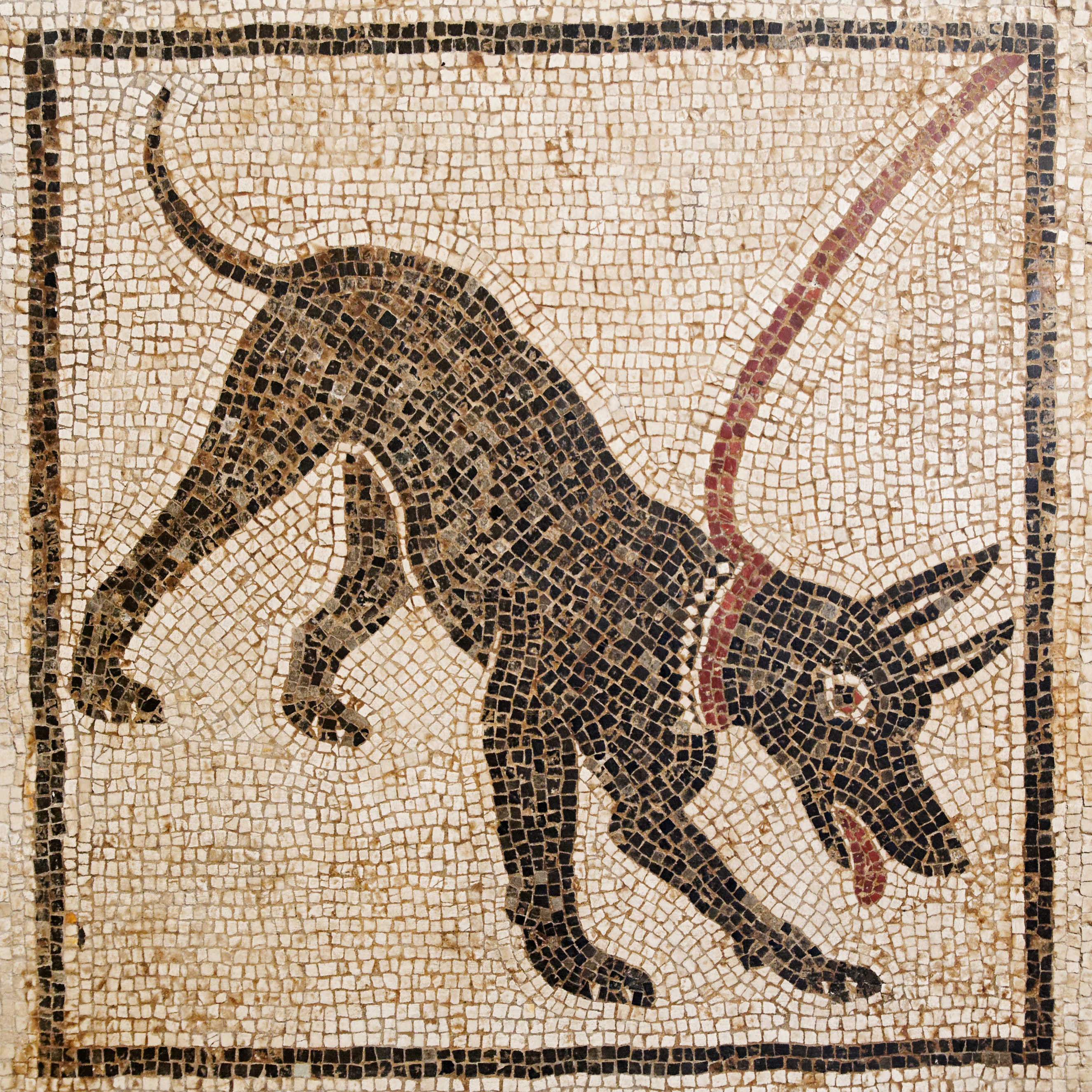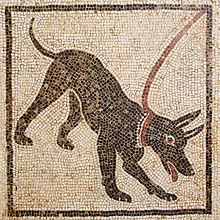Giacobbe Giusti, Cave canem

Giacobbe Giusti, Cave canem

‘Cave canem’ (beware of the dog) mosaic.. From Pompeii, Casa di Orfeo, VI.14.20
Giacobbe Giusti, Cave canem
2nd century Cave canem mosaic at the entrance to the House of the Tragic Poet, Pompeii
Notice at the Glasgow Necropolis
Beware of the dog (also rendered as Beware of dog) is a warning sign indicating that a dangerous dog is within. Such signs may be placed to deter burglary even if there is no dog.[1][2]
History
Warning signs of this sort have been found in ancient Roman buildings such as the House of the Tragic Poet in Pompeii, which contains a mosaic with the caption cave canem. Some suppose that these warnings may sometimes have been intended to prevent visitors from stepping upon small, delicate dogs of the Italian Greyhoundtype.[3]
Law
Under English law, placing such a sign does not relieve the owner of responsibility for any harm which may come to people attacked by the dog.[4][5]
References
- Jump up^ R Wright, RH Logie (1988), “How young house burglars choose targets”, The Howard Journal of Criminal Justice
- Jump up^ C Wilkinson (1998), “Deconstructing the fort”, Journal of Australian Studies
- Jump up^ Cheryl S. Smith (2004), The Rosetta bone, pp. 10–11, ISBN 978-0-7645-4421-7
- Jump up^ James Paterson (1877), Commentaries on the Liberty of the Subject and the Laws of England, p. 271
- Jump up^ Charles G. Addison, Horace Gray Wood (1876), A treatise on the law of torts, p. 285
External links
 Media related to Dog-related warning signs at Wikimedia Commons
Media related to Dog-related warning signs at Wikimedia Commons



